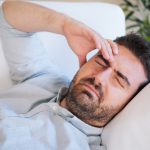Feeling dizzy? Get natural relief for the symptoms of vertigo
 (NaturalHealth365) Vertigo is a feeling of dizziness, a spinning or whirling sensation, and an overall out of balance sensation. These symptoms can be present even when perfectly still.
(NaturalHealth365) Vertigo is a feeling of dizziness, a spinning or whirling sensation, and an overall out of balance sensation. These symptoms can be present even when perfectly still.
Movements such as rolling over in bed, looking up, or just moving your head can escalate or worsen the symptoms. In addition, basic head movements such as looking up or to the side can trigger an attack. And, with most health experts expecting fall-related injuries to reach $50 billion, in annual healthcare costs, this is a serious problem.
What exactly causes vertigo?
There are a number of different causes of vertigo including food allergies to EMF pollution. Vertigo can be defined based upon whether the cause is peripheral or central. Central causes of vertigo arise in the brain or spinal cord while peripheral vertigo is due to a problem within the inner ear.
A closer look at peripheral vertigo
It is estimated that 85% of patients with vertigo have peripheral vertigo, with either part of the inner ear that controls balance or with the vestibular nerve, which connects the inner ear to the brainstem. The other 15% comes from a central nervous system disorder.
The inner ear can become inflamed because of illness, or small crystals found normally within the inner ear – which become displaced and cause irritation to the small hair cells within the semicircular canals, leading to vertigo. This is known as benign paroxysmal positional vertigo.
Since the inner ear controls balance, it has been found that certain head movement exercises may dislodge the crystals in the ear and stop the dizziness.
Sometimes the maneuver can move the debris from one inner ear canal to another. This can cause a different kind of vertigo. Because of the caveats it is best to learn the movements from an experienced healthcare provider.
What is “central” vertigo?
Central vertigo is usually a result of an abnormal processing of the vestibular sensory input by the central nervous system. This condition is due to a problem in the brain – usually in the brainstem or the back part of the brain (cerebellum).
Conventionally speaking, a wide variety of medications are used to treat both types of vertigo and the frequently concurrent nausea. These drugs include a combination of acetylcholine, dopamine and histamine receptor antagonism.
But, let’s be honest, pharmaceutical treatments never address the cause or offer any long-term solution.
Western medicine views Meniere’s disease as “incurable”
According to the Committee on Hearing and Equilibrium of the American Academy of Otolaryngology, Meniere’s disease is a chronic, incurable vestibular (inner ear) disorder. Vertigo, associated with Meniere’s disease, is thought to be caused by a fluid buildup in the inner ear.
Those that experience this condition may have dizziness, fluctuating hearing loss, ringing in the ear (tinnitus) and a feeling of pressure in the ear. Some people may be able to have fewer attacks by: eating a low-salt diet, using diuretics to get rid of the extra fluid, exercising to improve balance and avoiding caffeine, alcohol, tobacco and stressful situations.
In some cases, a physician may suggest surgery to relieve the symptoms of Ménière’s disease. But surgery can damage your hearing, so it is usually used only after other treatments have not worked.
Is there a safer way to treat vertigo?
Getting to the root cause of the symptoms is the only way to find relief. Find out why the body is reacting in a certain way and you now have a reversible condition.
The value of upper cervical treatment
Disequilibrium is usually cervical in origin. It has been shown in several studies that the cervical spine plays a very strong role in the body’s regulation of equilibrium.
The top third of your spine, located in the neck, is called the cervical spine, your atlas, or C1 vertebra, is located at the very top of the cervical spine. Pressure on the brainstem can result from an atlas misalignment.
The combination of undue stress on the nervous system and reduced blood flow to the brain can create a host of symptoms with dizziness and vertigo commonly among them. When the atlas is misaligned the whole body is thrown off balance as your core tries to make up for your crooked head and neck.
By correcting the misalignment, a mechanical stress is removed. This removes the irritation to the central nervous system and allows the brain, brainstem, and spinal cord to function properly again. In addition, unaltered transmission of nerve impulses between the brain and body can clear the way for a resolution to the problem.
Several studies reveal that patients with all forms of vertigo show enormous improvements to total resolution with upper cervical chiropractic care. So, instead of accepting your condition and the associated drug treatments – try visiting an upper cervical chiropractor for a more natural approach.
About the author: Dr. Matthew Roe is a practicing upper cervical chiropractor and has a Bachelor of Science Degree in Exercise Science. He has a Doctor of Chiropractic degree graduating Cum Laude from Life University College of Chiropractic. Having studied with the best Upper Cervical specific doctors in the world he understands true healing. His practice focus is to help people fine true health naturally. For more information about Dr. Roe – visit: WinterGardenChiropractors.com
Sources for this article include:
NCOA.org
Mayoclinic.org
NIH.gov
Vestibular.org
American-hearing.org
Medlineplus.gov
Patient.info
Healthline.com
Patient.info



